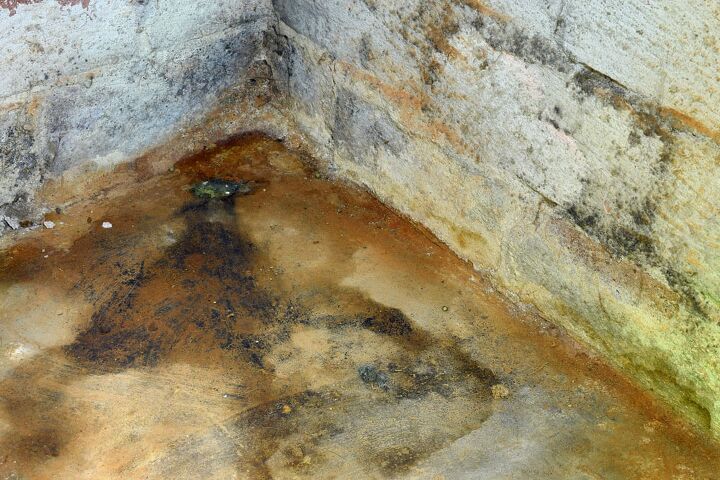Hydro Ban Vs. RedGard Liquid Membrane: Which One Is Better?

Believe it or not, over fifty percent of the homes in the United States have reported some sort of issue with mold or mildew. As mold-related health problems are a concern for many people, reducing moisture in areas where mold can thrive is crucial to improving the indoor air quality in your home.
While mold and mildew can form anywhere that has excessive moisture, bathrooms are one of the most common areas for mold growth. Particularly, mold tends to grow on shower grouts and shower walls.
Therefore, in order to limit or even completely eliminate any risk of mold growth, it’s important that you find a way to waterproof your shower. There are a number of different options for waterproofing a shower such as using foamboard, sheet membrane, or liquid membrane.
The preferred method varies from professional to professional and homeowner to homeowner, although many find themselves wondering whether Hydro Ban or RedGard is a better liquid membrane.
Both Hydro Ban and RedGard are liquid-applied waterproofing materials that cure to form a seamless, watertight coating. Though, each product comes with its own unique characteristics, and pros and cons.
With that said, let’s take a look at why shower waterproofing is so important, the systems available to create an impermeable seal in your bathroom, and which popular liquid membrane product you should choose – Hydro Ban or RedGard?
Do You Need to Hire Shower Installers?
Get free, zero-commitment quotes from pro contractors near you.

Why Shower Waterproofing is Needed
Many assume that shower tiles are completely waterproof. While porcelain and ceramic tiles on both the floors and walls of your shower are essentially waterproof, the grout is not. Grout does a good job at holding the tiles in place, but absorbs water through its pores.
Without some type of waterproof membrane installed underneath the grout, the shower will gradually take in water and cause damage to the materials beneath. This applies to the drywall, plywood, and even the studs in your walls or floors – all of these components are susceptible to mold growth and wear over time.
Systems for Waterproofing a Shower Floor
Waterproof is now the standard for tile substrates, meaning that no water or moisture reaches the substrate and keeps your home dry. There are a number of different ways to waterproof the floor underneath your shower tiles. In the past, most professionals would install either a copper or rubber shower pan liner beneath a traditional mortar base.
This system was flawed, as it would still allow water to slowly seep into the mortar joints and cause pooling of excess moisture due to a shift in the liner’s slope.
Nowadays, most contractors have ditched the copper or rubber pan liner in favor of a waterproof membrane technology. These membranes are installed directly underneath the layer of tile to prevent any water from getting into the cement or mortar subfloor.
There are four primary types of waterproofing membranes for shower floors, including foam wallboards, sheet membranes, liquid membranes, and foam shower bases. Before we break down Hydro Ban vs. RedGard, let’s take a look at the main waterproofing options.
1. Foamboards
Foam wallboards, or foamboards, are installed as tile backers for structural stability. Made out of extruded polystyrene foam, they also create a waterproof barrier. It is essentially a waterproofing system and backerboard all in one product. One of the most popular brands of foam wallboard used for waterproofing showers is called Kerdi Board.
2. Sheet Membranes
Sheet membranes are a manufactured product, made out of different blends of plastic compounds that are directly attached to the tile backer board and shower surface. They offer the highest level of durability, crack isolation, and waterproofing. Most of these membranes are available in a “peel and stick” technology, which allows for easy installation.
3. Foam Shower Bases
Foam shower bases are typically sold as kits, available with a foam shower curb that is waterproofed in the same manner as the base. The equipment may also include a membrane bonding shower drain and seam tape. The foam that is used in these kits is typically the same type of foam that’s used in foam wallboards.
4. Liquid Membrane
Liquid membrane is basically a waterproof paint for your shower. While not as durable and strong as sheet membranes, with slightly lower crack isolation abilities, liquid membranes are applied in a thin, flat layer to large areas. This product is easy and convenient to work with, as the application is as simple as using a paintbrush directly on your shower floor. When dried, the membrane forms an elastomeric layer that remains flexible.
This waterproofing option can be used as a standalone waterproofing system or in combination with another system. Some of the most popular brands for liquid membranes are RedGard and Hydro Ban (developed by Laticrete).
What is Hydro Ban?
Produced by Laticrete, a family-owned, global manufacturer of green flooring and façade materials, Hydro Ban is a thin, crack isolation/ waterproofing membrane that doesn’t necessitate the use of reinforcing fabric. It is a single-component liquid rubber polymer that is self-curing and creates a flexible, seamless waterproof coating.
Hydro Ban has the ability to bond to a wide array of substrates. It is applied using a paintbrush, paint roller, or airless paint sprayer. The first coat must be completely dry to the touch before a second coat can be applied. It takes approximately two hours to cure, at a temperature of 70 degrees Fahrenheit. When applied, it is a light sage green color and, when fully cured, it changes to a darker olive green hue. Some advantages of Hydro Ban include:
- Quick-drying time on tile
- Non-flammable and contains no solvents
- Features anti-microbial technology
- “Extra Heavy Service” classification by TCNA performance levels
- Anti-fracture protection up to 1/8”
- Attaches directly to metal
- Does not require the use of fabric
- Thin product – only between 0.020 and 0.030” thick when fully cured
Additional Hydro Ban products available from Laticrete include Hydro Ban Quick Cure, Hydro Ban Cementitious Waterproofing, and Hydro Ban Sheet Membrane. Find out if Wedi or Kerdi is the better membrane.
What is RedGard?
RedGard is another type of liquid membrane used for waterproofing showers. More specifically, it is a ready-to-use elastomeric waterproofing membrane that can be used for both residential and commercial stone and tile applications. The product is suited for interior and exterior substrates, creating an uninterrupted impermeable membrane barrier that has excellent adhesion and reduces crack transmission in stone and tile flooring.
Not to mention, RedGard can attach directly to metal drains, stainless steel, PVC, and ABS drain assemblies. It can also be used as a slab-on-grade moisture vapor barrier underneath a variety of floor coverings. Like Hydro Ban, this product can be applied by using a roller, brush, trowel, or airless paint sprayer. It goes on a hot pink color and dries to a dark red color when fully cured.
Here are some of the advantages that come with RedGard:
- Simple application with a roller, brush, trowel, or airless sprayer
- Can be applied to concrete, cement backerboard, exterior-grade plywood, drain assemblies, and decks
- Appropriate for waterproofing pools, spas, and other water features
- Tough enough to be used as a shower pan liner
- Reduces drying time with its quick-dry formula
- Isolates cracking to 1/8”
Hydro Ban vs. RedGard
Since both Hydro Ban and RedGard claim to be effective, durable, and easy-to-install liquid waterproofing membranes for showers and other applications, how do you know which product to choose? Upon doing extensive research on both, you’ll find that RedGard is certified for use in steam rooms and also as a vapor barrier, while Hydro Ban is not. Apart from price, this is the major difference between the two products. So, if you’re building a steam room, you’ll want to opt for RedGard over Hydro Ban.
If you’re building a normal shower, choosing between the two products comes down to preference as they are virtually equal in terms of performance. However, again, they are not equal in terms of cost. Here’s what you can expect to spend, on average, for these two liquid membrane products:
| Product | Price |
| Laticrete Hydro Ban – 1 Gallon | $87.99 |
| Latricete Hydro Ban – 5 Gallon | $338.42 |
| RedGard – 1 Gallon | $64.50 |
| RedGard – 3.5 Gallon | $157.99 |
In terms of cost, it’s clear that you can get a one-gallon pail of RedGard for a much more affordable price than Hydro Ban – which makes RedGard the more affordable choice for those looking to save money on their shower waterproofing project.
Waterproofing Shower Walls
Fortunately, liquid membranes – both Redgard and Hydro Ban – can be applied to shower walls for waterproofing in the same manner you would apply them to the flooring. Though, you’ll want to move slowly and apply it in small amounts to ensure that the product doesn’t run down the wall.
Another option for waterproofing shower walls is to use self-adhesive waterproofing sheets. Many of these products come with a warranty and can be applied directly to concrete, existing ceramic tiles, wood, plasterboard, cement screeds, and dry screed.
Do You Need to Hire Shower Installers?
Get free, zero-commitment quotes from pro contractors near you.

Related Questions
What is the difference between Hydro Ban and Hydro Barrier?
Both from Laticrete, the main difference between Hydro Ban and Hydro Barrier is that Hydro Barrier does require fabric to be used in all corners and seams and Hydro Ban does not. They also can be distinguished based on color – Hydro Barrier is a light blue color and dries to a darker blue, while Hydro Ban is a light green color that dries to a darker olive green.
How many coats of Hydro Ban are required?
To ensure waterproofing capabilities, you should apply two coats of Hydro Ban.
How many coats of RedGard are needed?
For best results, apply two coats of RedGard when used around drains, as a crack prevention membrane, and as a general waterproof membrane.
Related Articles

Jessica considers herself a home improvement and design enthusiast. She grew up surrounded by constant home improvement projects and owes most of what she knows to helping her dad renovate her childhood home. Being a Los Angeles resident, Jessica spends a lot of her time looking for her next DIY project and sharing her love for home design.
More by Jessica Stone













![10 Best Cordless Leaf Blowers – [2022 Reviews & Ultimate Guide]](https://cdn-fastly.upgradedhome.com/media/2023/07/31/9070789/10-best-cordless-leaf-blowers-2022-reviews-ultimate-guide.jpg?size=350x220)

![How Much Weight Can a 4×4 Support Horizontally? [It Depends!]](https://cdn-fastly.upgradedhome.com/media/2023/07/31/9070333/how-much-weight-can-a-44-support-horizontally-it-depends.jpg?size=350x220)













![10 Most Dangerous Neighborhoods in Baltimore [Updated]](https://cdn-fastly.upgradedhome.com/media/2023/07/31/9075655/10-most-dangerous-neighborhoods-in-baltimore-updated.jpg?size=350x220)